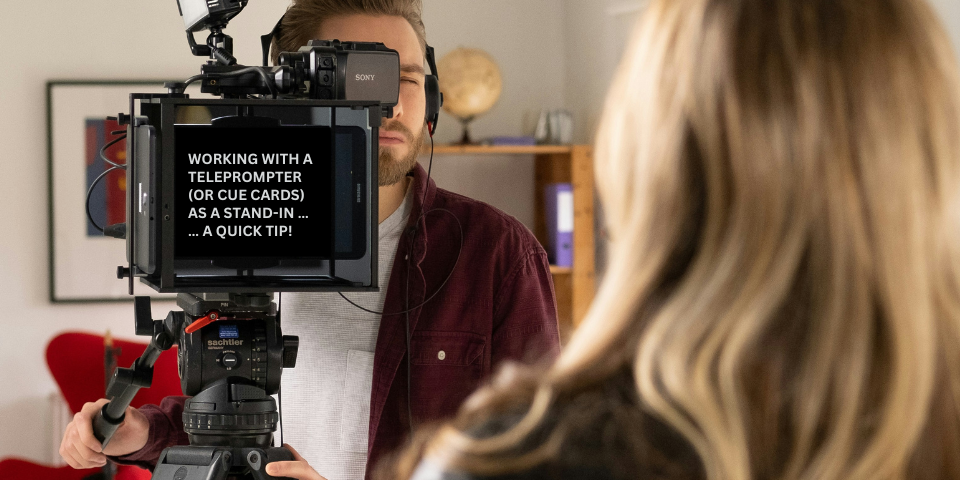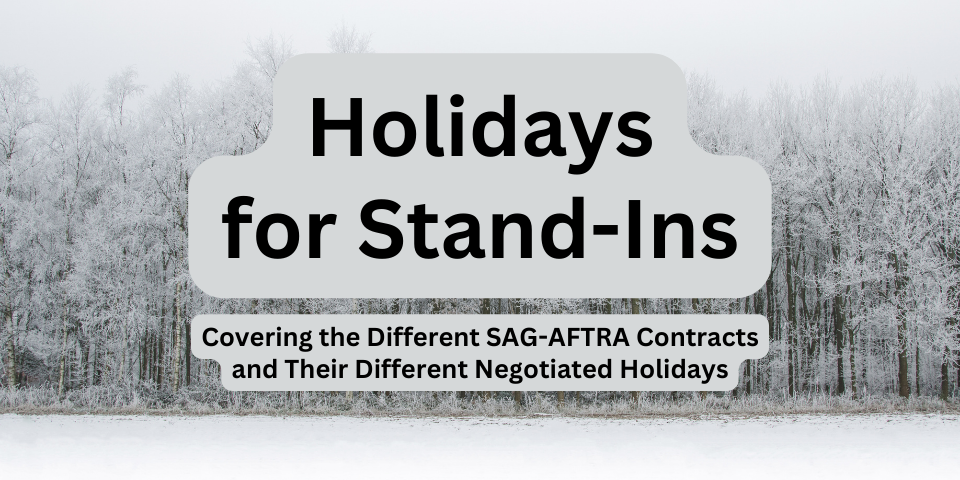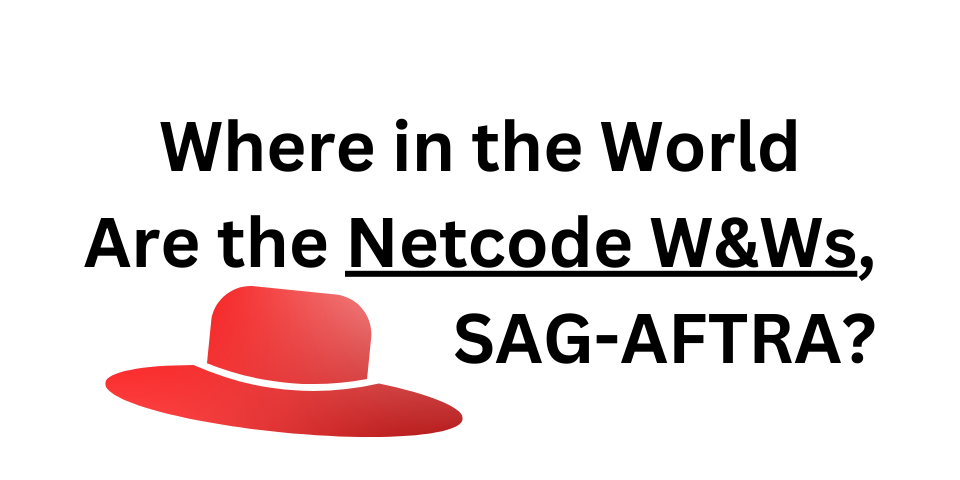As mentioned in Episode 37 of The Acting Income Podcast, which Stand-In Central recently profiled, SAG-AFTRA quietly updated wage tables here and here back on January 4, 2018, showing not a 3% increase in wages beginning July 1, 2018, but instead only a 2.5% increase in wages beginning on that date.
Those smaller wage increases apply to stand-ins who work under the 2017 Television/Theatrical Agreement, which covers most dramatic television series as well as feature films.
Stand-In Wages to Come for July 2018
The updated information in the wage tables means that starting July 1, 2018, stand-ins on SAG-AFTRA feature films and television projects will receive $199/8 hours, and those working on a Legacy AFTRA Exhibit A television project will receive $205/8 hours.
A 3% increase would have meant stand-ins would have made approximately $200/8 hours, and $206/8 hours, respectively.
SAG-AFTRA did not announce these new rates in a press release in January 2018 or at any point up to the publication of this post.
In fact, an unnamed SAG-AFTRA field representative on June 1, 2018 (just one month before the new rates will take effect) was not even aware that SAG-AFTRA had elected to accept only a 2.5% increase in wages rather than a 3% increase, and was not aware that the wage tables had been updated in January 2018.
What SAG-AFTRA Got in Place of a Greater Wage Increase
In choosing a 2.5% increase rather than a 3% increase in wages, SAG-AFTRA took an option presented in the 2017 collective bargaining agreement with the AMPTP to also increase contributions to its pension and health plans by 0.5%.
Those plans are the SAG-AFTRA Health Plan as well as the union’s two pension plans: the SAG-Producers Pension Plan and the AFTRA Retirement Fund.
The union’s choice of lower wages increases and bigger contributions to their benefit plans may come as little surprise to those who saw a downtrending in the funding percentages in recent years for SAG-AFTRA’s pension plans.
Bad-Faith Bargaining?
Since negotiations in 2017 were done under media blackout, it is hard to determine exactly why SAG-AFTRA accepted the strange political position of being wholly responsible in determining whether its members would only conditionally receive a 3% wage increase rather than achieve an absolutely guaranteed 3% increase.
One might argue that SAG-AFTRA predetermined during negotiations that it would give its members only a 2.5% increase in wages and a 0.5% increase in its benefit plan contributions for 2018, but bargained to allow itself to spin that it got a 3% wage increase for members for 2018 by suggesting a 3% increase was possible.
In other words, given the result of the negotiations, SAG-AFTRA could tell its members that it got a 3% increase in theory for 2018, while secretly knowing that it would only ask for a 2.5% increase. To that point, SAG-AFTRA published as a key victory in the negotiations this point, invoking the word “guaranteed”:
A guaranteed raise of 2.5 – 3 percent for each year of the contracts and increased pension and retirement contributions.
In truth, no 3% increase in wages was ever guaranteed. Instead, it was conditional.
In general, 3% wage increases are routine for collective bargaining in the entertainment industry, so when a union can’t achieve 3% wage increases, that union looks weaker.
The 2017 deal allowed the union to look strong by announcing (conditional) 3% wage increases, even though its position was weakened by the burdens of its downtrending pension plans and the need to boost their funding.
Will SAG-AFTRA More Publicly Announce to Its Members That It Chose Lower Wage Increases?
It’s to be seen if SAG-AFTRA will loudly tell members that it chose larger contributions to its benefit plans over larger wage increases, or whether stand-ins will show up to work on July 1, 2018, realizing they are only getting a 2.5% increase rather than a 3% increase.
It is no stretch to imagine that the AMPTP bargained strongly against SAG-AFTRA knowing the weakness of the union’s benefit plans and that that weakness meant the AMPTP could leverage SAG-AFTRA into accepting lower wage increases than 3% for its members.
It may have also calculated that politically it would look bad for SAG-AFTRA if they were the ones deciding to accept lower wage increases for its members — rather than making the AMPTP look bad by having producers assert lower wage increases.
Economic Impact
Probably many stand-ins will not balk much about the $1 difference between a 2.5% and a 3% increase. But when it comes to overtime, the difference is more pronounced. And when it comes to productions’ bottomlines, the difference is even more pronounced, allowing productions to save considerable amounts on what they pay stand-ins.
While it may seem like a $1 difference in a day’s pay to a stand-in, it is the production that financially benefits more than the stand-in by a 2.5% increase in wages for 2018 rather than a 3% increase. A production may save hundreds to thousands of dollars of payments to second team in having to pay only a 2.5% increase. It is less likely that a single stand-in would reap hundreds to thousands of dollars off of a $1 increase in its wages.
That said, productions will still have to pay an increased percentage to the benefit plans of 0.5%, in that way affecting their bottomlines. But many stand-ins who don’t qualify for health insurance or pension may not find those increased contributions in their economic or financial interest.
In other words, some stand-ins just want the take-home pay, and they aren’t in it for the health insurance or pension.
Netcode Negotiations
The negotiations with the AMPTP over the Network Television Code — otherwise known as “Netcode” — are currently underway. We covered the upcoming Netcode negotiations in this recent post. Watch how SAG-AFTRA positions its gains, especially considering its interest in boosting contributions to its ailing pension plans. Will SAG-AFTRA be able to bargain for wage increases that are absolutely 3%? How will stand-ins gain or not gain in these negotiations?
No strike authorization vote has been sent to members as of this post, suggesting that SAG-AFTRA is not prepared to strike Netcode stand-in jobs if negotiations don’t go well. Stay tuned!
Do you have insight on the wage increases or pension plan contributions for 2018? Share your insights in the comments section below!






Although this is disappointing news, I really appreciate you laying it all out, Ben. You always break things down really well, and I’m glad you talked about the economic impact. Thanks for this!
Thank you, Sara! As someone who I presume is interested in funding her benefit plan or plans, the boosted contributions theoretically are good news, but at the cost of a raise and take-home pay especially when you stand in for long hours, the contributions are less exciting.
I would surmise you would be happier if it were a both-and rather than an either-or when it came to 3% raises and increased contributions to benefit plans.
One might even say that members lost when their union SAG-AFTRA got the privilege in negotiations to act as if it had decisively achieved 3% raises, when the truth was that that raise was only and merely conditional.